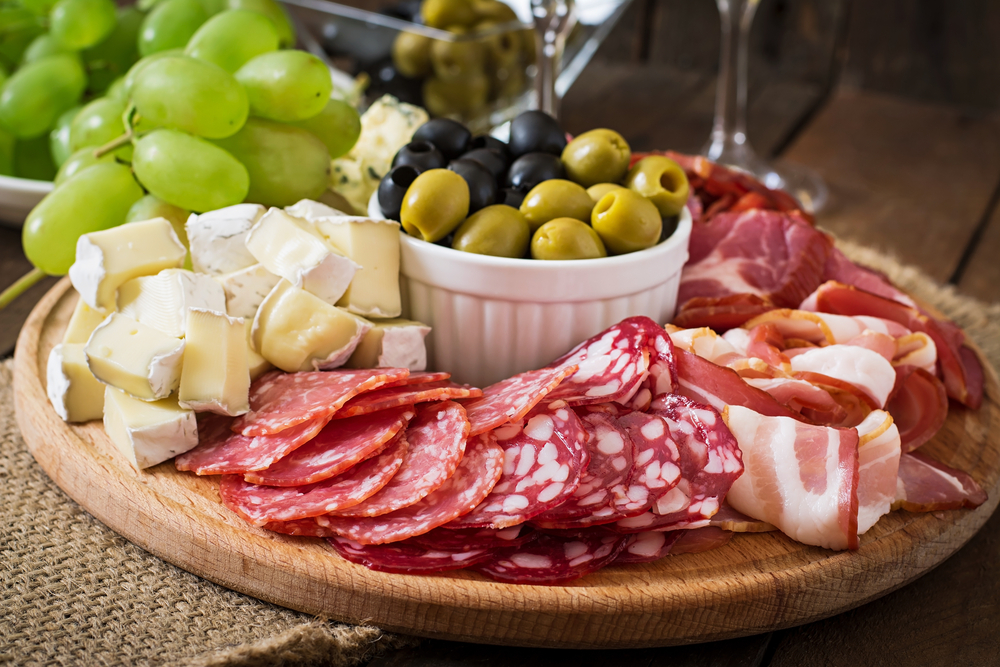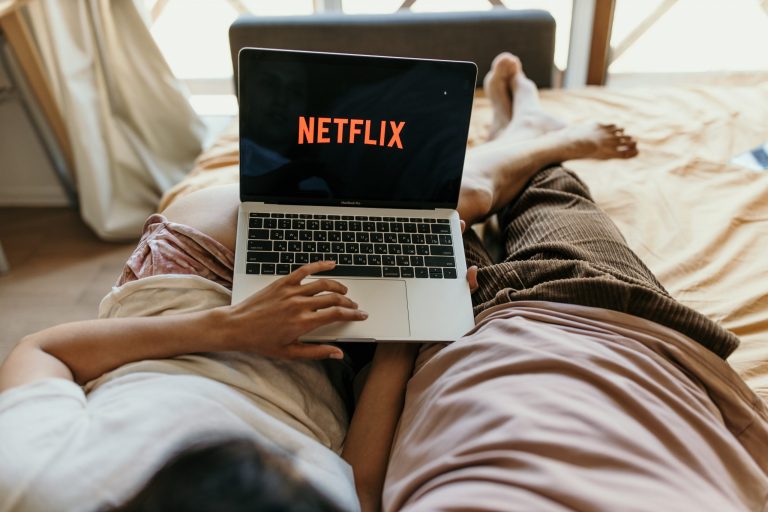In an age where your morning latte costs as much as lunch and rent keeps creeping up, those small indulgences that once felt like no-brainers are starting to pinch a bit. We’re talking about those little luxuries you used to treat yourself with, the ones that added a touch of joy to your day without breaking the bank. Unfortunately, those “cheap” pleasures aren’t as affordable as they once seemed—thank you, inflation and rising living costs. So, let’s take a look at what we’ve had to reluctantly cut from our lives, or at least think twice about, in this new era of smarter spending. Grab a cup of that home-brewed coffee and let’s dive into the list.
1. Gourmet Groceries

Shopping for gourmet groceries was once an exciting way to elevate everyday meals, but the cost can quickly escalate. Speciality cheeses, imported oils, and artisanal bread might not fit the budget as easily as they once did. People are becoming more mindful of their shopping habits, opting for local and seasonal ingredients instead. Farmer’s markets and budget-friendly grocery stores offer quality produce without the hefty price tag. It’s about prioritizing what truly adds value to your meals.
Gourmet items can make cooking feel like an adventure, offering flavors and products that are out of the ordinary. Still, the financial strain of regularly buying these luxury items can’t be ignored, especially with rising food costs. Simplifying your grocery list and focusing on essentials can lead to healthier and more cost-effective eating habits. Exploring new recipes and cooking techniques can make even the simplest ingredients feel special. It’s all about finding that balance between indulgence and practicality in your kitchen.
2. Fancy Coffee To-Go

Remember when a trip to your favorite coffee shop was just a regular part of your daily routine? Now, this quick caffeine fix feels more like a guilty pleasure than a small indulgence. The price of a single cup has steadily increased, and suddenly, brewing your own feels like a smarter choice. According to CNBC, the average price of a cup of gourmet coffee has risen by nearly 30% over the past decade, leaving us to wonder if that morning mocha is worth the splurge. If you’re like most people, this is one luxury you might skip on weekday mornings.
But let’s be honest; there’s something irreplaceable about that barista-crafted latte art and the cozy cafe ambiance. It’s not just the caffeine hit; it’s the entire experience that’s hard to let go of. Those moments of sipping while people-watching or enjoying a book provide a mini escape from the daily grind. And while homemade coffee might be kinder to your wallet, there will always be days when the call of the coffee shop is impossible to resist. For now, though, maybe reserve those visits for special occasions or rough days.
3. Streaming Services

Once upon a time, cord-cutting meant saving money, but now streaming services can add up to a small fortune. Monthly subscriptions to Netflix, Hulu, Disney+, and others have become essential for most people, yet the cost is starting to rival traditional cable. And let’s not forget the add-ons like premium channels or ad-free experiences, which further dig into your budget. It’s becoming a juggling act to decide which service to keep and which to ditch. While no one wants to miss out on the latest binge-worthy show, prioritizing is key.
At the end of the day, everyone wants their entertainment fix, but at what cost? Sharing accounts with family or friends, or even rotating subscriptions can be a smart way to keep access without going broke. Reassessing your viewing habits might reveal that you don’t need as many options as you thought. Maybe it’s time to explore free offerings or rediscover the joys of physical media like DVDs and books. The goal is to stay entertained without letting the costs spiral out of control.
4. Weekend Brunch

There was a time when weekend brunch was a staple social activity, a perfect way to catch up with friends over eggs Benedict and bottomless mimosas. These days, the bill for brunch has skyrocketed, making it a less frequent treat. According to Eater, the cost of dining out has increased by about 25% in recent years, thanks to rising food prices and labor costs. This means your leisurely brunch outing can easily turn into a budget buster. Suddenly, making your own avocado toast at home doesn’t sound so bad.
Of course, brunch is more than just a meal—it’s an event, a ritual that signifies the weekend’s leisure and indulgence. The energy and atmosphere of a busy brunch spot are hard to replicate at home. It’s about the vibe, the laughter, and the shared experience that makes it special. While going out might become an occasional treat, recreating brunch at home with some friends can be a fun and budget-friendly alternative. Plus, no one’s judging if you stay in your pajamas.
5. Gym Memberships

At one point, having a gym membership was seen as essential for personal health and wellness. Unfortunately, the cost of a membership has risen, prompting many to rethink its value. According to a report from The Wall Street Journal, gym memberships have increased by an average of 10% in recent years. This means that the cost-benefit analysis might tip you toward at-home workouts or outdoor alternatives. With so many free or low-cost options available, the gym might not be as necessary as it once seemed.
While gyms offer equipment and classes that are hard to replicate at home, many people find they can achieve similar results without the monthly fee. Online workout programs, apps, and YouTube channels offer a variety of routines that cater to all fitness levels. Outdoor activities like running, hiking, or cycling also provide excellent exercise without the financial commitment. It’s about finding what works best for your lifestyle and budget. Your health is a priority, but it doesn’t have to come at a high cost.
6. Salon Haircuts and Treatments

For some, a regular salon visit was once a non-negotiable self-care ritual, but now the cost is harder to justify. Haircuts, color treatments, and styling have all seen price hikes, leaving people to ponder if they can stretch out the time between visits. DIY solutions and at-home care products are gaining popularity as people look to maintain their hair without the salon price tag. It’s a learning curve, but many find it empowering to take hair care into their own hands. Still, the professional touch is hard to fully replicate.
Salons offer more than just a service; they provide an experience and expertise that can’t be easily duplicated at home. The pampering and personalized care you receive during a salon visit contribute to the overall appeal. Yet, with costs rising, many are opting for simpler styles that require less maintenance. Embracing your natural hair texture or exploring low-maintenance cuts can also be a game-changer. It’s about balancing the professional experience with practical at-home solutions.
7. Dining Out Regularly

Dining out used to be a simple pleasure, an easy way to enjoy good food without the hassle of cooking. However, the cost of restaurant meals has surged, making frequent outings less feasible. According to The New York Times, the price of dining out has jumped significantly, driven by increased food costs and wages. This means that those impromptu dinners are becoming more of a planned event. Cooking at home is not only more economical but also a great way to hone your culinary skills.
Eating out offers convenience and a social experience that’s hard to replicate in your own kitchen. Yet, the financial strain of regular dining out can’t be ignored, leading many to reserve restaurant visits for special occasions. Hosting potlucks or dinner parties at home can provide the same social enjoyment without the hefty bill. Exploring new recipes and cooking techniques can turn meal prep into an enjoyable activity rather than a chore. Sometimes, the best meals are those shared at home with loved ones.
8. Regular Movie Nights at the Theater

Going to the movies used to be a beloved pastime, a chance to escape reality for a couple of hours. But with ticket prices climbing, plus the cost of popcorn and drinks, a night at the theater doesn’t come cheap. Many people now reserve movie outings for blockbuster releases or special occasions. Streaming services and home theater setups are becoming the norm for everyday viewing. While the cinematic experience is unique, the cost is pushing many to rethink their entertainment choices.
Nothing quite matches the magic of the big screen, the surround sound, and the communal experience of watching a film with an audience. However, with so many affordable and even free viewing options available at home, it’s hard to justify regular trips to the theater. Creating a cozy movie night at home with homemade snacks or themed movie marathons can be just as enjoyable. It’s about finding a balance between the thrill of the theater and budget-friendly home entertainment. Sometimes, comfort and savings win over tradition.
9. Bottled Water

Once seen as a convenient way to stay hydrated, bottled water is now an environmental and financial burden. With rising awareness around plastic waste, people are reconsidering the necessity of buying water in single-use bottles. Investing in a good-quality reusable water bottle and a home filtration system can save money in the long run. Not only is it more economical, but it’s also a step toward sustainability. Plus, tap water is often just as clean and safe to drink.
Convenience is the main draw of bottled water, especially when you’re on the go and need a quick hydration fix. Yet, the cost of constantly buying bottles adds up, and the environmental impact is difficult to ignore. Many cities have improved their tap water systems, offering a viable alternative for those looking to cut down on waste. Making the switch might require a shift in habit, but the benefits are worth it. Small changes can lead to significant savings and a cleaner planet.
10. Magazine Subscriptions

For years, magazine subscriptions were a source of inspiration, offering a monthly dose of fashion, news, and lifestyle content. However, with the rise of digital media, physical magazines are slowly becoming a thing of the past. The cost of maintaining multiple subscriptions can add up, especially when much of the content is available online for free. People are increasingly turning to digital platforms for their reading material, which often offer more up-to-date information. While nothing beats the feeling of flipping through glossy pages, practicality is taking precedence.
Print magazines hold a tactile charm that digital versions struggle to replicate. They offer a break from the screen and a chance to unwind with curated content. Yet, with budget considerations and the availability of digital alternatives, many are opting to let go of physical subscriptions. Exploring e-magazines or reading apps can provide the same content without the clutter or cost. It’s about finding a balance between nostalgia and modern convenience.
11. Takeout Food

Takeout was once a convenient solution to busy nights or impromptu cravings, but now the bill can leave you reeling. Delivery fees, service charges, and tips can double the cost of your meal. As a result, people are rediscovering the joys of home-cooked meals and meal prepping. Cooking at home can be quicker and more satisfying than you might think, especially with a little planning. Plus, it offers the chance to experiment with new recipes and flavors that you might not find in a takeout menu.
Of course, sometimes nothing hits the spot quite like your favorite takeout dish. But with rising prices, those regular orders might need to become an occasional treat. Planning and prepping meals ahead of time can make weekday dinners hassle-free and more economical. Sharing the cooking duties with friends or family can also lighten the load and add some fun to the routine. After all, the goal is to enjoy what you eat without breaking the bank.
12. Ride Shares And Gas

The daily commute has always been a part of life, but the expenses attached to it are starting to weigh heavily on people. Between gas prices, public transportation fares, and parking fees, getting to work costs more than ever. Remote work has shown that for many, the commute isn’t as essential as once thought. Carpooling, biking, or walking are becoming popular alternatives for those who live close to their workplaces. For now, minimizing commute costs is a top priority for many looking to save.
While commuting offers a chance to transition from home to work mode, it’s often an expensive and time-consuming part of the day. The shift towards remote work has made people question the necessity of the daily trek. Exploring alternative modes of transportation can lessen the financial burden and contribute to a healthier lifestyle. Creative solutions like staggered work hours or compressed work weeks can also help reduce the frequency of commutes. Redefining the workday is not just about convenience but about optimizing time and resources.
13. Monthly Subscription Boxes

Once a delightful surprise in your mailbox, subscription boxes are feeling less like a treat and more like an unnecessary expense. These boxes market themselves as affordable ways to discover new products, but the reality often includes forgotten items and regrettable purchases. Whether it’s beauty, snacks, or books, the novelty fades when you realize that half the stuff goes unused. The cost of maintaining multiple subscriptions can sneak up, stretching a budget already under pressure. Maybe it’s time to hit pause and reconsider what you truly need.
The allure of receiving curated goods is undeniable; it’s like a little gift to yourself each month. However, you might find more joy in handpicking items you genuinely desire. You could also consider gifting a subscription or sharing one with a friend to cut costs while still enjoying the experience. With so many options available, it’s easy to feel like you need them all, but sifting through and prioritizing can lead to smarter spending. In the end, quality over quantity might be the better mantra here.
This article is for informational purposes only and should not be construed as financial advice. Consult a financial professional before making investment or other financial decisions. The author and publisher make no warranties of any kind.








